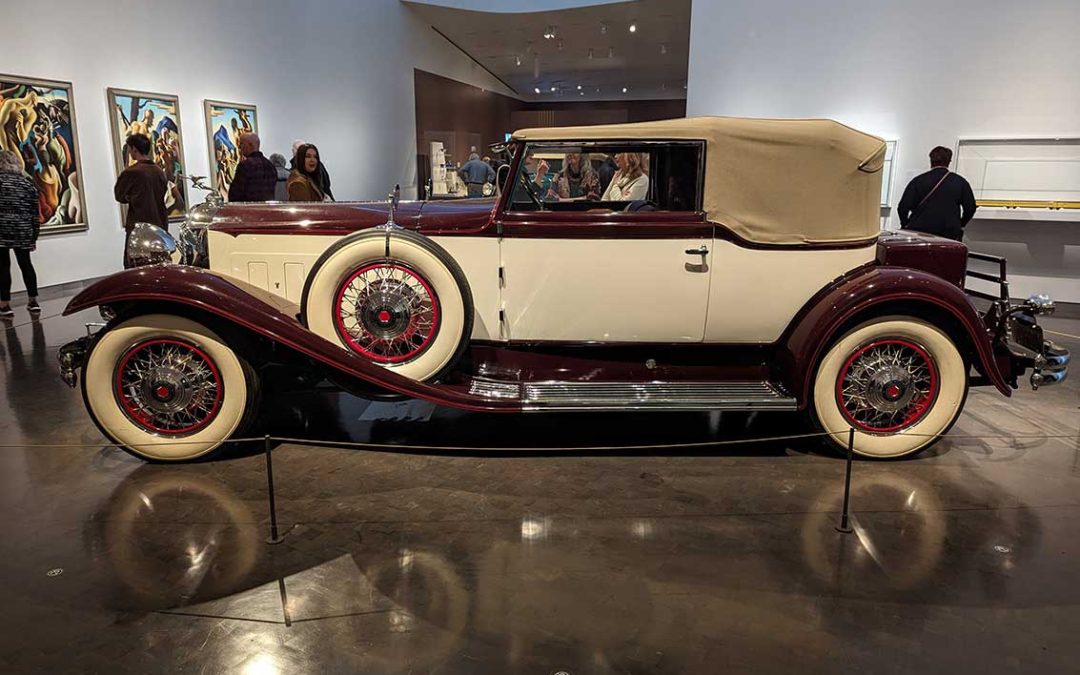This 1931 Packard Model 840 Dietrich Convertible Victoria was the centerpiece of an exhibition on the Art Deco movement at the Nelson-Atkins Museum of Art in Kansas City, MO. The exhibition, “American Art Deco: Designing for the People, 1918-1939,” ran July 2022 through January 2023. (Photo by Corbin Crable)
July 2023
Cover Story
A modern style
Art Deco movement was elegant but accessible
by Corbin Crable
It was an aesthetic that defined an entire decade.
A visualization of the wealth, style and creativity of the 1920s, the Art Deco design movement could be found just about everywhere you looked, from soaring skyscrapers to everyday items like tea kettles and clocks, from graphic design to automobiles. And an appreciation of all things Art Deco can be found not just in our homes, but also in the institutions that govern and entertain us, such as municipal buildings, museums and concert halls. Items designed in the Art Deco style utilized basic geometric shapes and were both “sleek and hand-crafted, rich but not ornate, showy but not overly ornamental,” according to a trend expert at Modsy. It was influenced by the Egyptology craze of the late Victorian era, which had seen a resurgence in the 1920s with the discovery of King Tut’s tomb.
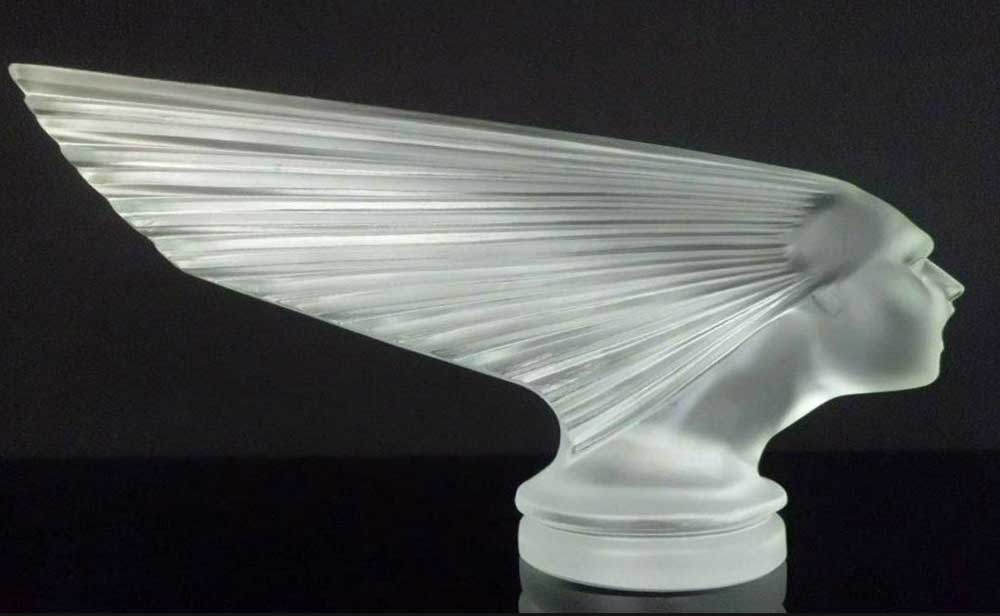
Glass hood ornament
A glass hood ornament from the 1930s. (Image courtesy of Etsy)
Born in France
The Art Deco movement actually began years before it exploded into our collective consciousness during the Jazz Age. It grew out of the Art Nouveau design movement of the late 19th century, which itself was defined by elaborate, organic patterns steeped in nature and plant/floral life, as well as curved lines and asymmetry. Art Nouveau also took inspir-ation from many character-istics of Cubism, most notably, collages. Its heyday ran from the 1880s to the start of World War I; the actual name “Art Deco” (originally called “French Arts Decoratifs”) was coined for this movement in the 1960s, decades after it ended.
Like Art Nouveau, the Art Deco movement saw its origins in Europe in the early 1920s, starting with jewelry and textiles, then being incorporated into furniture, and finally, architecture. Materials used in Art Deco-style pieces included stainless steel, Bakelite, plastics, and some even incorporated horn, ivory and zebra skin. By 1925, the movement had gone global after being introduced at an exhibit held in Paris, making its way into the skyscrapers of metropolitan areas around the world. Rejecting the naturalism of Art Nouveau, items created in the Art Deco style used sharp lines and vibrant colors to represent an embracing of the fast-paced industrial world, according to Collectors Weekly.
Art Deco even found its way into cinema, featuring prominently in German filmmaker Fritz Lang’s dystopian-future tale Metropolis, which was released in 1927.
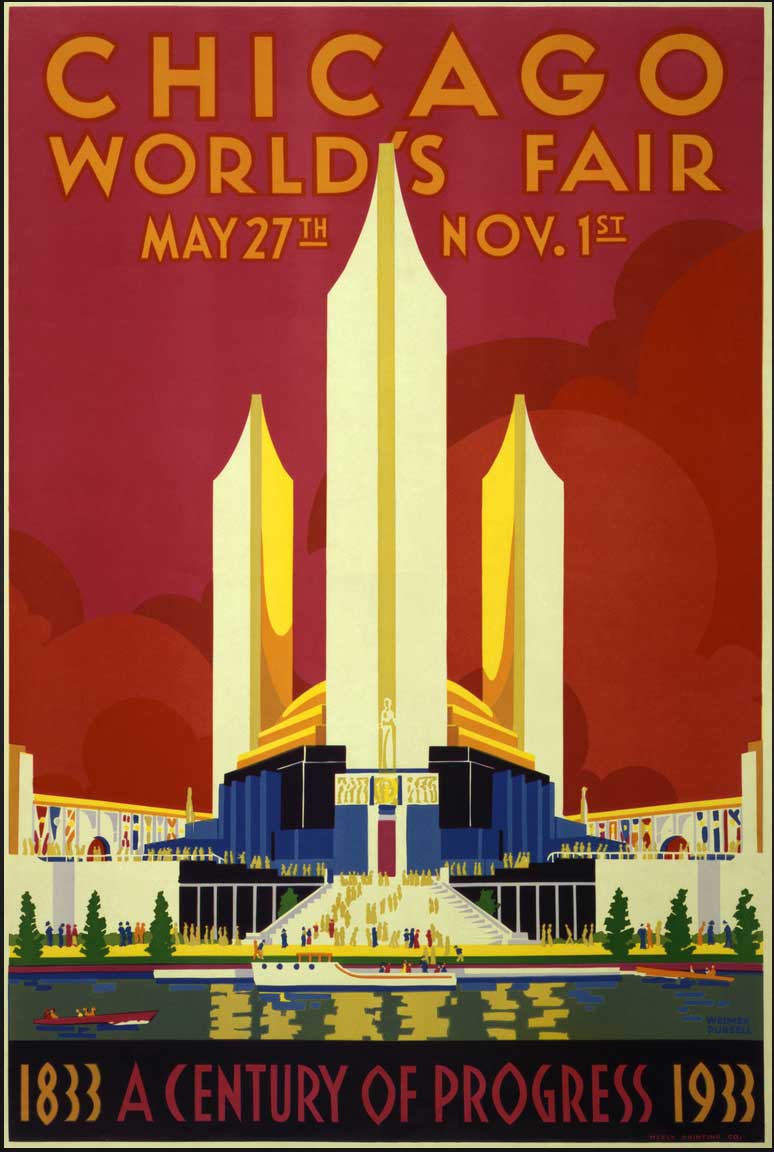
A Century of Progress poster
Poster for “A Century of Progress” by Weimer Pursell, 1933. (Image courtesy of Wikimedia)
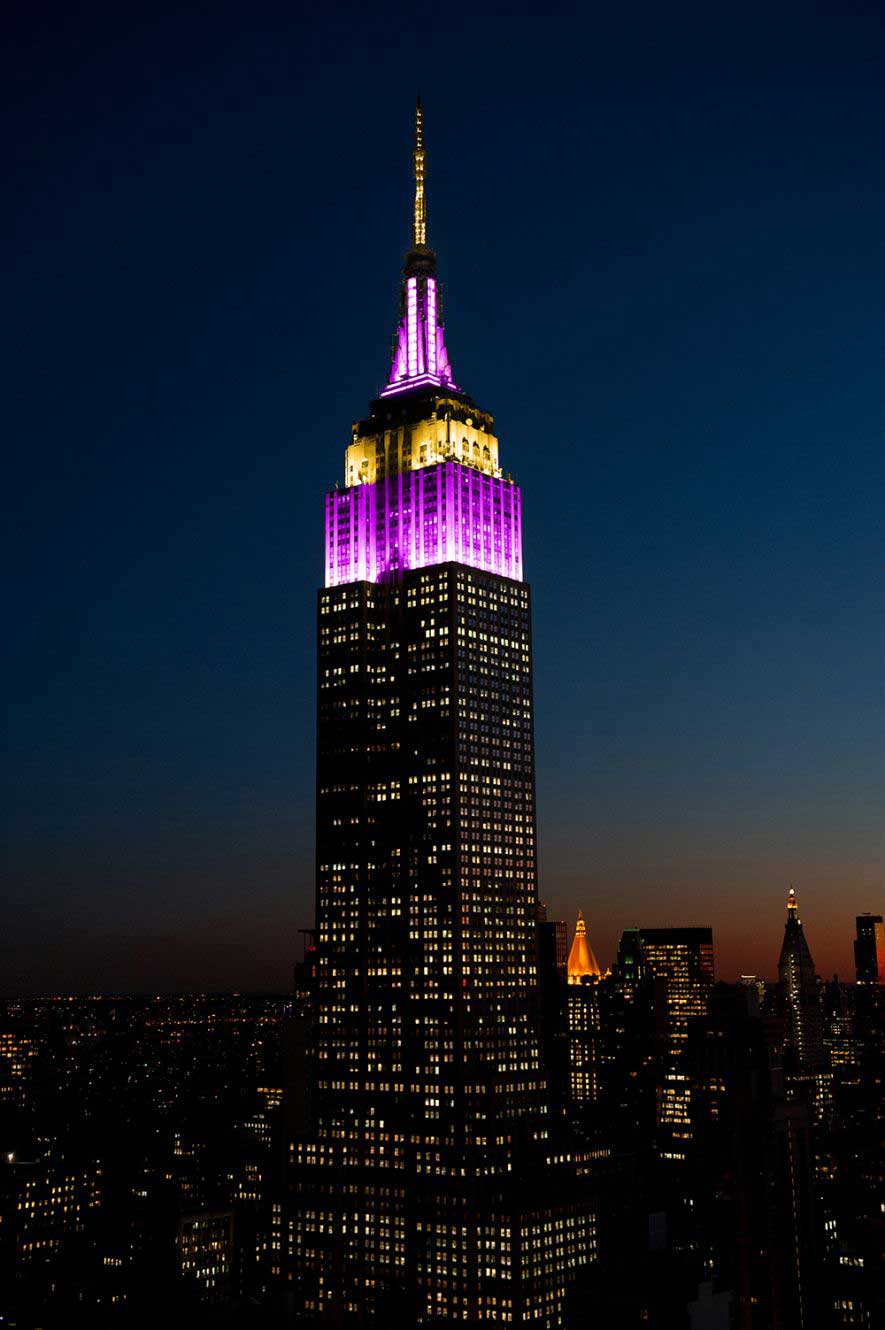
New York’s Empire State Building
New York’s Empire State Building stands as one of the most famous examples of Art Deco architecture in the world. (Image courtesy of Wikimedia Commons
Master of the Sky
“Art Deco was all about moving away from the past and paving a new way for the future, culturally and aesthetically, which meant keeping some decorative elements but also giving them a sleeker, cosmopolitan twist,” according to a 2020 article on Housebeautiful.com. “As such, many Art Deco buildings wear a ‘tiara,’ the nickname for floors that aren’t leasable spaces (speaking to the decorative value of design that this movement really pioneered). Tiaras make the buildings taller and distinctive, inviting you to look up.” Fittingly, the article adds, Art Deco was all about the celebration and promotion of modernity; some designers say the motto of the movement was “Master of the Sky.”
Of course, Collectors Weekly notes, since Art Deco items were so popular, they were mass-produced, and as such, they remain readily available on websites like eBay and Etsy, as well as online antique dealers and auction houses. Architectural marvels designed in the Art Deco style have become synonymous with the cities in which they are located.
“The 1930 Chrysler Building, an Art Deco masterpiece, is one of the most famous landmarks in Manhattan; the 1937 Golden Gate Bridge in San Francisco is another Art Deco triumph, in this case of both design and engineering,” an overview on collectorsweekly.com reads. “Then there’s Ocean Drive in the South Beach section of Miami, home to some 800 preserved Art Deco structures.”
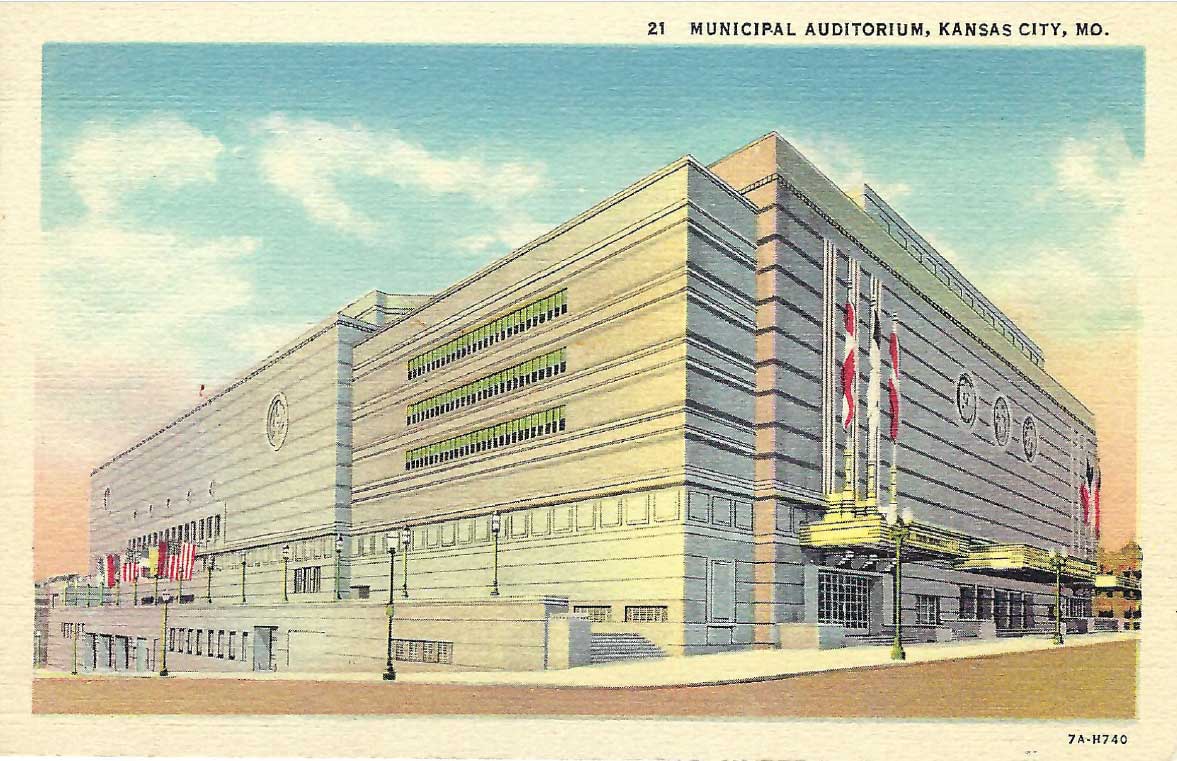
Kansas City’s Municipal Auditorium
A postcard shows the Art Deco style in the design of Kansas City’s Municipal Auditorium, built in 1935. (Image courtesy of Pinterest)
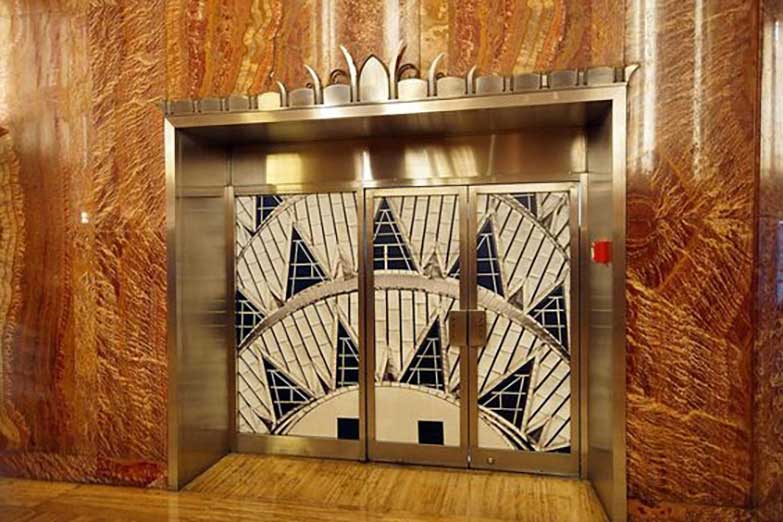
The Chrysler Building elevator
An elevator in The Chrysler Building. (Image courtesy of Pinterest)
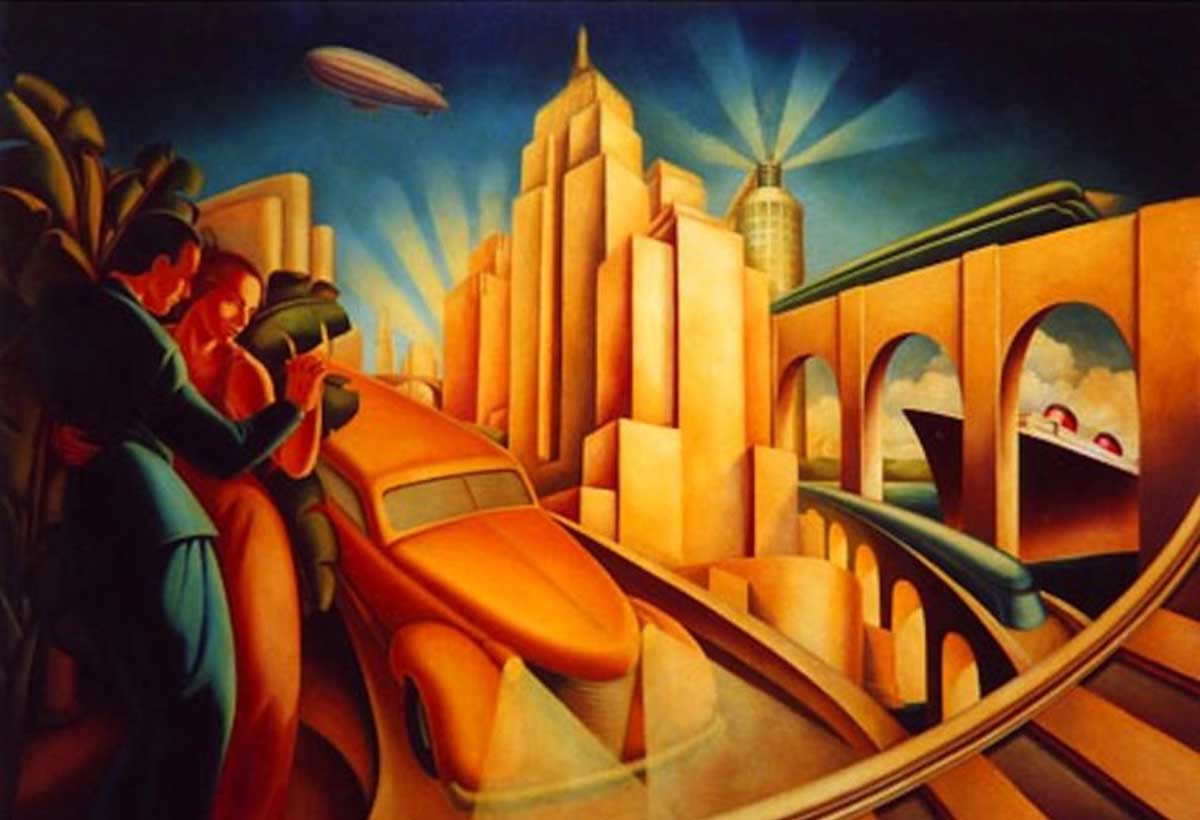
Art Deco poster
The compilation of style elements in this poster evokes the feeling of elegance that was prominent in the Art Deco movement. (image courtesy of wallpapersafari.com)
From the massive to the diminutive
Closer to home, nowhere can the Art Deco influence be seen more clearly in architecture than downtown Kansas City at the Municipal Auditorium complex, a grouping of four special event venues. Opened in 1935, it features Art Deco architecture and was hailed by The Architectural Record as “one of the 10 best buildings of the world that year,” according to the now-defunct Kansas City Times. All visitors to the Music Hall, one of the four buildings that make up the complex, are treated to the breathtaking foyer, filled with stunning Art Deco details that also are found throughout the hall’s public spaces, from restroom signs to wall decorations and the elaborate Art Deco chandeliers. In fact, the lighting fixtures in the Music Hall inspired the four Sky Stations on top of another building in the complex, Bartle Hall.
The smaller, everyday items that have survived the decades remain quite affordable, according to Collectors Weekly. “Industrial designers Raymond Loewy and Henry Dreyfus created many functional objects (such as clocks, radios, and telephones) with the classic Art Deco angular, streamlined look,” the site’s overview states. “Statuettes and figurines, frequently of female nudes, were produced in plastic, bronze, and ceramic. Glass objects — from vases to perfume bottles — were also popular, with Rene Lalique, Antonin Daum, Henri Navarre, and Maurice Marinot among the most prized practitioners.”
Porcelain figures in the Art Deco style, too, are collectible and easily found, the article reads.
“Porcelain figurines created for Robj, Rosenthal, and Lenci often depicted characters and caricatures dressed in the fabrics of the day, with Art Deco costume jewelry on their necks and Art Deco watches on their wrists,” the article continues. “By the bed would be a bronze and mahogany clock, in the dining room a china service emblazoned with geometric patterns, and in the living room silver and enamel cigarette cases leaning against ashtrays made of Bakelite.”
Part of the appeal of Art Deco was its accessibility to the common man; the items mass-produced in this style were affordable and allowed their owners a touch of class and elegance in their home — “the use of inexpensive or innovative materials enabled the production of a diverse variety of affordable objects, bringing beauty into the public realm in a novel way,” according to Art File Magazine.
Art Deco’s decline
Art Deco’s global popular-ity, which seemingly touched just about every facet of life in the 1920s, began to wane with the onset of the Great Depression and accelerated with the start of World War II. By 1939, the style was simply viewed as too “garish and decadent.”
“Metals were repurposed to be used in the construction of weaponry rather than beautifying structures or interior spaces,” the Art File Magazine article notes. “Furnishings weren’t seen as prestige symbols anymore.”
In addition, the article reads the appeal of Art Deco objects – their widespread availability – was reduced by technological innovations in mass production. “Further technical advancements enabled cheaper manufacture of basic consumer products, reducing the demand for and appeal of Art Deco designers.”
Thankfully, trends in antiques and vintage collecting are cyclical, and with the renewed interest in Mid-Century Modern design in recent years comes a renewed examination of its elements, many of which take influence from Art Deco.
“A movement that in many ways aimed to reject the past is now seen as a nostalgic, beloved classic,” Art File Magazine says. “There has been a consistent, ongoing appreciation of the design since the 1960s. Mid-Century Modern design, which revives the sterile purity of the Bauhaus and continues forth the Art Deco aesthetic’s streamlined style, has elements of Art Deco.”
Art Deco, for all of its visual beauty, symbolized optimism in the future, conveying the message that surely better times were on the horizon and that which ails us will become only a memory.
“There was going to be no more poverty, no more ignorance, no more disease,” wrote the late Robert McGregor, who worked to preserve the Art Deco heritage of a New Zealand town. “Art Deco reflected that confidence, vigor, and optimism by using symbols of progress, speed, and power.”
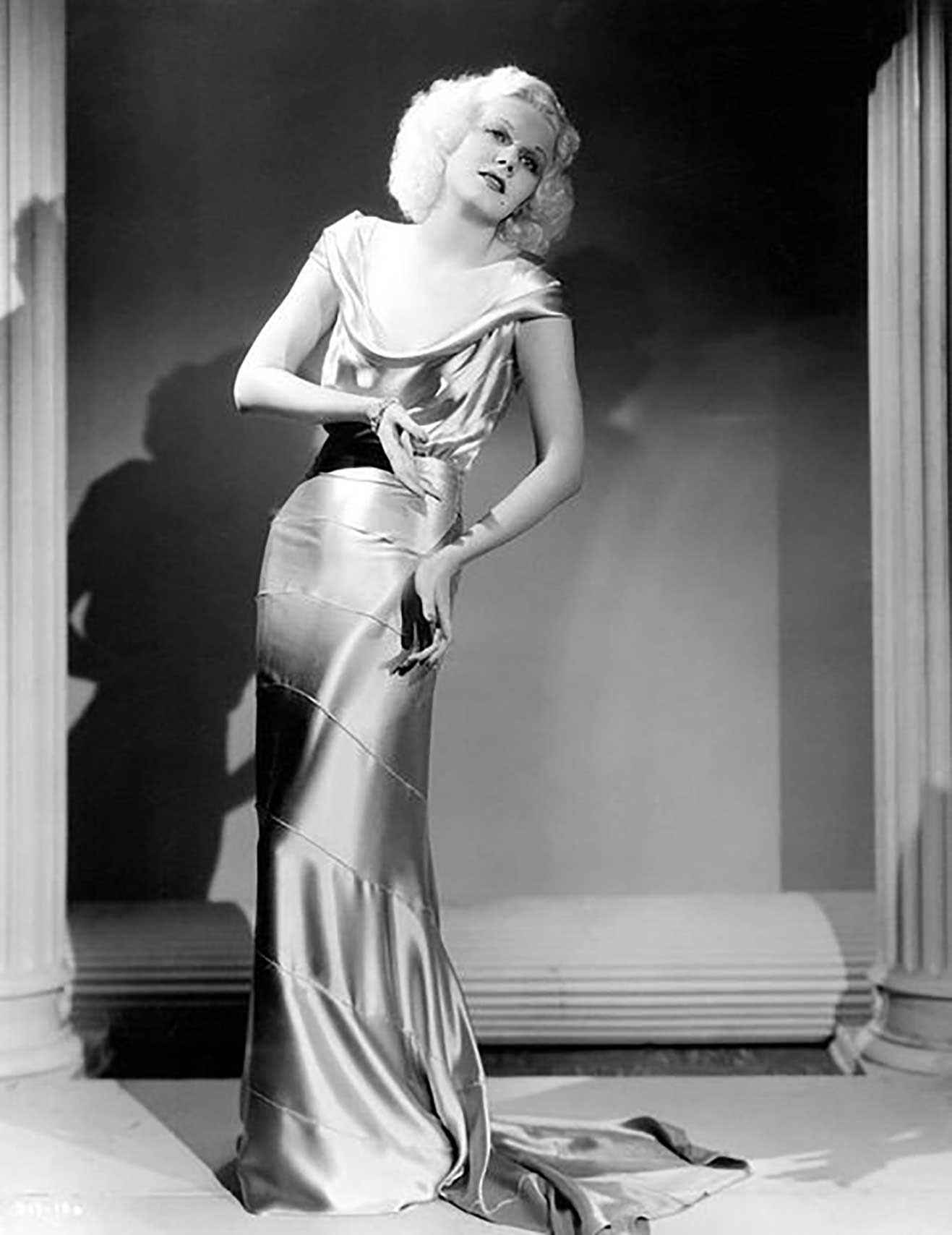
Art Deco fashion
Art Deco fashion for women in Hollywood included lots of embellishments, with floor-length gowns. Pictured here: American actress Jean Harlow.(Image courtesy of Pinterest)


